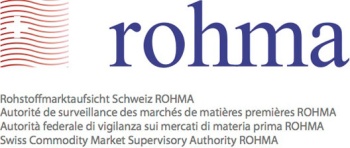Switzerland hosts a thriving trading industry. Zug , a canton notorious for tax advantages, and Geneva, a canton with a secular financial services industry, are home to many a company trading raw material which are commodities such such as oil, ores and wood.
A new regulatory object has appeared at the heart of Europe. A non-governmental organization has envisioned and made publicly available a framework for regulating the Swiss commodity market by means of a law (Commodities act aka CA) and a supervisory authority dubbed rohma.
A very notable trait of this entire regulatory object is that is fictitious albeit addressing a tangible issue (poverty in African countries producing oil) with significant amounts of money (>50 Bn USD per year) and a material impact of Swiss trade (25% of oil exportations).
Besides the smart way for creating awareness implemented by the NGO, the regulation tab contains an infographic displaying an overview of the mechanics of the commodities act. For those, like me, who do not have a formal education in law nor am involved professionally in interpreting regulatory text, this presentation goes a long way in keeping the interest in reading the law.
Reading the summaries of acts does not look like most types of laws I have come to read. Fewer articles and common language sentences are two notable differences. This being said, the infographic and summaries are likely to be understood by law-makers invited to vote the text, even if they have not personally contributed to drafting them. This reminds me of using mock-ups to define requirements when developing software. From experience in software development, lines wiritten in a mock-up make many lines in code to never be produced. I have a suspicion the type of overviews and text produced for this campaign to have the potential for helping regulatory texts to conain tens of articles and not hundreds or thousands.
